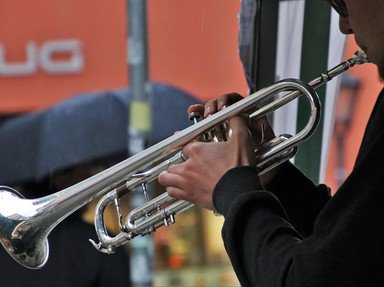
Big Band Showdown Trivia Quiz
Hop in the Wayback Machine and see if you can match some of the big bands of the 1930s and '40s with their signature songs. Note that most of the names would be appended with "& His Orchestra" and some of the songs were not the band's original themes.
A matching quiz
by CmdrK.
Estimated time: 4 mins.
- Home
- »
- Quizzes
- »
- Music Trivia
- »
- Jazz
- »
- Big Band